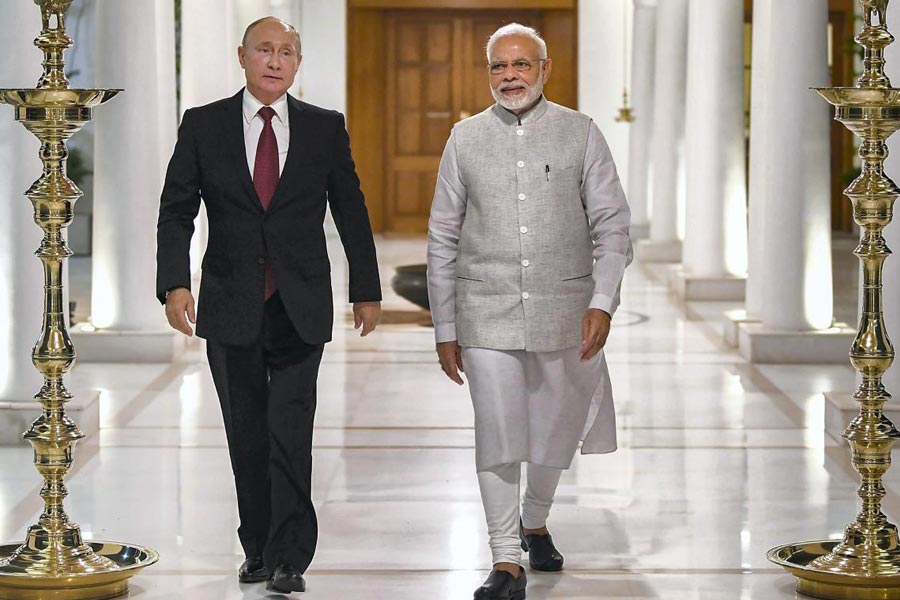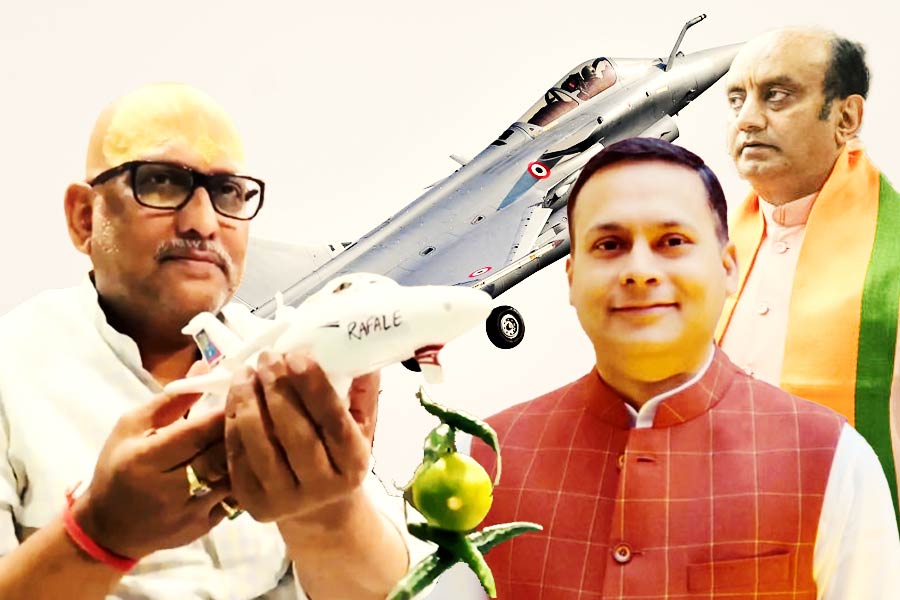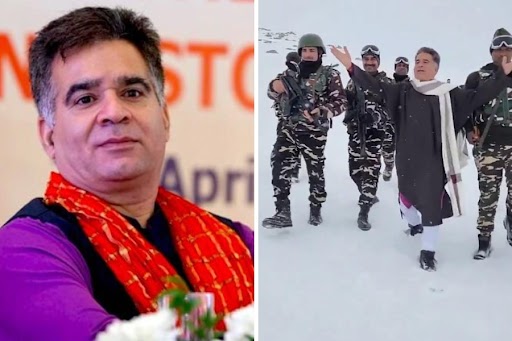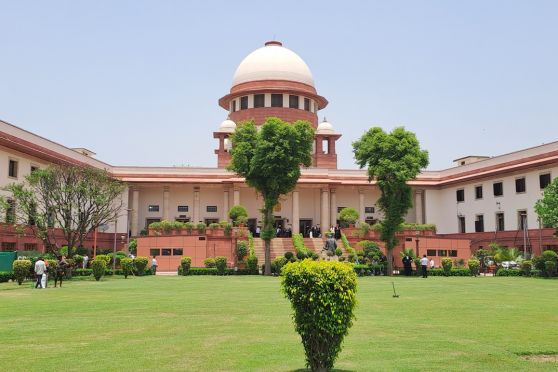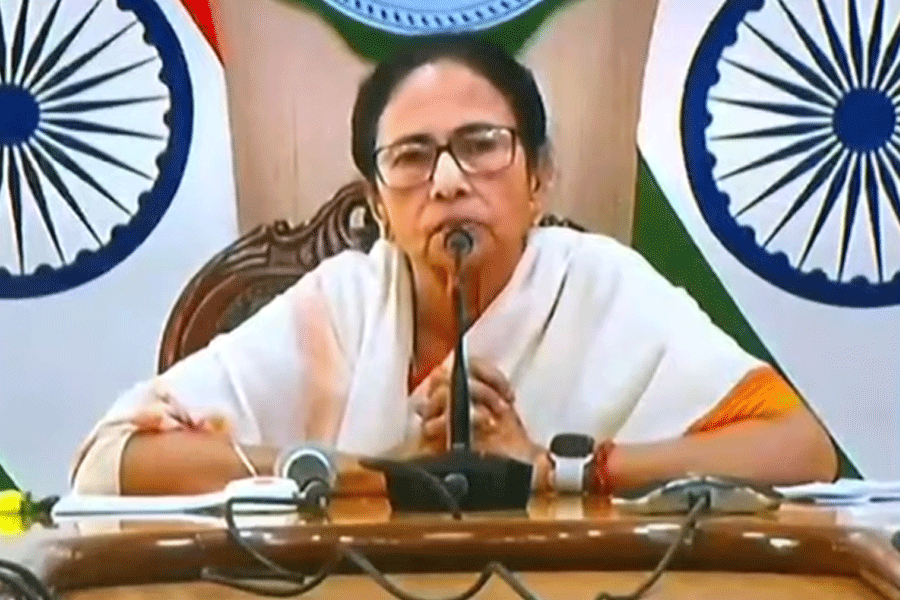 |
| Chief minister Nitish Kumar on board the chopper for his Seva Yatra, after the three-hour delay because of fog on Monday. Picture by Deepak Kumar n See Metro |
Baluaha Ghat (Saharsa), Dec. 12: Two temples of modern Bihar and two of the ancient, that’s what made the first and very foggy day of chief minister Nitish Kumar’s Seva Yatra foray into the Kosi outback.
Apart from the Kosi Mahasetu, two new bridges that link long-separated flanks of Mithila are nearing completion — a modest one in the remote and unapproachable sandbanks of Jalei, and an ambitious 10km affair that springs from Baluaha Ghat and jumps right across the Kosi into Darbhanga district.
Cost: Rs 550 crore. Benefit: Immeasurable.
The bridges, when completed over the next two years, will connect isolated habitations to the mainstream and ignite an economic transformation that people have only dreamt of. “The eight-hour journey to Darbhanga will get reduced to three,” said Raghuvir Singh, a local farm entrepreneur. “Can you imagine what that will do to my sale prospects? It will be revolutionary, ilake mein kranti aa jayegi.”
Baluaha Ghat lies about 20km west of Saharsa in the belly of a vast riverine wasteland, part tangled marsh, part run of sand. But in the middle of the desolation has now sprung this spanking lifeline of a bridge, which the chief minister came to for a mid-term review.
Nitish arrived woefully late, his chopper trapped on the Patna tarmac by fog all morning. But huge crowds awaited him beyond hours at both Jalei and Baluaha Ghat.
Alighting, he did a quick on-site inspection, driving down a construction ramp laid across the river and along the would-be bridge. But before settling down to the serious business of appraisal — and technical advice to on-site engineers — Nitish rippled the gathering with an impromptu walkabout along the barricade, shaking hands, accepting entreaty, even waving, star-like, his muffler aflutter in the wintry afternoon wind.
A stage had been laid on the low Kosi embankment, and as the crowds watched intently from afar, Nitish took a school-masterly powerpoint session, employing his engineer’s training, just as he had done a little earlier at Jalei: Isn’t the alignment a little awry? Are these spans going to be enough to cover the ends in case of flooding, are the approaches long and firm enough? Would it be better to add a spur along the banks for safety? Have you satisfied yourselves with testing the soil and riverbed? And, most pointedly, are you going to meet the deadline, because I can already see delays happening.
A senior project officer nodded insistently from behind. “Yes sir,” he said, “we will be on time.”
But why have delays happened, Nitish persisted, you must find the reasons. Then, the same question: “Will you be ready on time? Should I announce it to the people?” Yes sir, the officer affirmed again.
Nitish took the microphone and put the onus publicly on him. “I have been assured this bridge will be ready in two years,” he announced to a flutter of applause. “I will come back here on January 14, 2014, to dedicate this bridge to you.” The officers must have shuddered a little; Nitish had left no room for elasticity, they now have a firm finish-by date.
It was already dark by the time Nitish’s caravan — now a blaring flotilla of cars — drifted off the Kosi banks in the direction of Saharsa. First stop en route was the ancient shrine of Ugratara at Mahisi, which is also the native place of the legendary Sanskrit scholar Mandan Mishra. Thereon, he drove through narrow village lanes — many a turn mounted with ornate welcome gates where eager crowds stood pressed against the security ropes — and arrived at the altar of the 64 Mahayogini goddess on the edge of the Matsyagandha pond on the northern fringes of Saharsa. The Mahayogini is a much acclaimed and propitiated temple in these parts but its site — the Matsyagandha — isn’t much of a pond anymore. It is, in fact, quite dry and bare. Its restoration is a demand Nitish is likely to hear when he holds his public darbar tomorrow.


